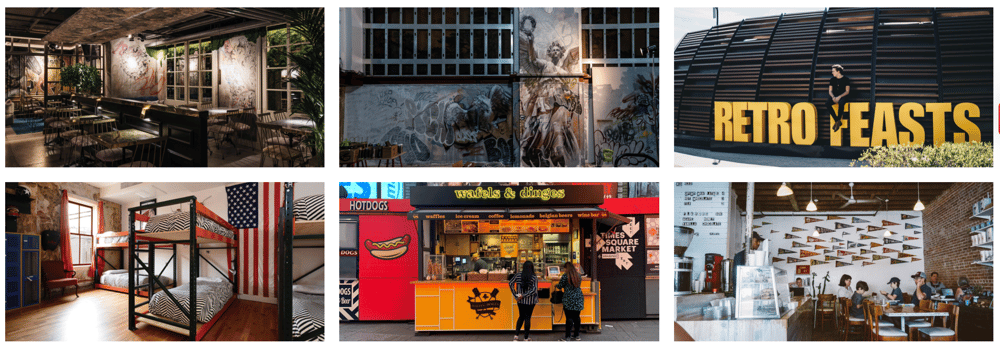Rethinking the flow of a restaurant, in the front and back of house, could be the ticket to success in a post-pandemic world. In fact, according to Livit Design CEO Ben Calleja, right now, finding greater efficiency across the board needs to be a top priority for all operators.
"How to cope with throughput, how to implement new technology, how to really maximize sales, ultimately… A lot of brands were thinking of doing things, but overnight they were forced to do it.”
During a recent appearance on RestaurantSpaces’ LinkedIn Live show, DISRUPT, Calleja ran us through the ways that brands can meet returning demand, despite big challenges currently facing the industry.
Eliminating Hierarchies
With a labor shortage now wreaking havoc on the restaurant industry, Calleja said it's more important than ever for companies to examine the way they structure their organizations… particularly in the U.S.
Eliminating a hierarchical mindset and cross-training staff, for example, can help propel efficiency and ultimately, eliminate the need for as many people.
“This industry is very traditional. You have the general manager, assistant managers, mixologists, head chefs, sous chefs, servers, runners, dishwashers. And once you’ve stepped up, you never go back down. When you go from a runner to a server, you want to move upwards. What we’ve seen is that creates work in silos and less efficiency.”
Calleja and Livit have experimented with breaking down these traditional structures, relying on a specific measure to gauge how slick a restaurant’s operations are: how many guests can be served per labor hour.
To achieve better results through the lens of this metric, Livit will pay an employee more if they are trained across multiple stations, also turning the initiative into a means of incentivizing staff. Operationally, having these multifaceted workers means in non-peak hours, a restaurant can utilize fewer staff members to meet guest demand.
"You don't want a restaurant with a host, bartender and chef just waiting for guests to come in," Calleja said. "We were able, in the lab, to run a whole restaurant with two team members. It's pushing the limits of how restaurants are traditionally operated."
Leveraging the Latest Technology
While tackling a labor shortage can be addressed by rethinking staff management and training, new technology can also play a part.
Building frictionless, or seamless, guest experiences is something Livit has been experimenting with for several years now. At key "lab" restaurants across the world, Calleja explained how guests can enjoy a visit without having to interact with staff at all.

Using Livit's V restaurant in Los Angeles as an example, he said a customer may place an order online, ahead of time, without needing to tell the restaurant when they'll arrive. Once the guest crosses the restaurant's threshold, geofencing technology triggers the order to be sent to the kitchen automatically. Once the guest seats themselves, the system determines their location — accurate within an inch — and their food and drink is served in minutes.
"You can create the ultimate guest experience," Calleja said. "The technology isn't here to take away people [staff], but to make their lives easier. If we automatically control lights, sounds and scents, team members can truly focus on hospitality."
An Unexpected Real Estate Opportunity
Another thing to have come out of the pandemic is the record number of retail closures being witnessed globally. While unfortunate, Calleja said the phenomenon is creating unprecedented possibilities for restaurant brands to capitalize on the newly available real estate.
"You can go and see corner locations closed on 5th Avenue in New York, so there's a huge opportunity there," Calleja said. "So basically we can take advantage and clients can take advantage of lower real estate costs and rent and have higher returns on those premises."
But there's a caveat. Generally, former retail locations lack existing infrastructure for hoods and other key restaurant components and aren't prepared for restaurant use. Not yet, anyway. Livit is currently creating a new lab to test how much the restaurant industry can push the boundaries in terms of space.
"It's about playing with what can be done in terms of technology and equipment to access these locations globally," he said. "If we crack the code, the scalability is immense."
Prioritizing Flexibility
Moving forward in a post-pandemic world will require the innovation and efficiency Calleja discussed, but also a willingness to remain flexible, and to try new things.
For many large restaurant brands, change can be difficult and slow.
"That frustrates me," Calleja said. "The lack of speed and innovation in large companies."
"There are players that really disrupt but the vast majority are dinosaurs," Calleja said. "There's an opportunity, but we would like to see speed in innovation."
Follow us on LinkedIn to catch live episodes of DISRUPT. Ben will also be speaking at RestaurantSpaces '21 October (17-19). Request an invite.

Posted by
Chain Restaurants Reimagined.
The Retreat to Reimagine Restaurant Development, Design + Technology.
April 12-14, 2026 | Miami, FL





-3.png)

-3.png)
-4.png)
-3.png)

Comments